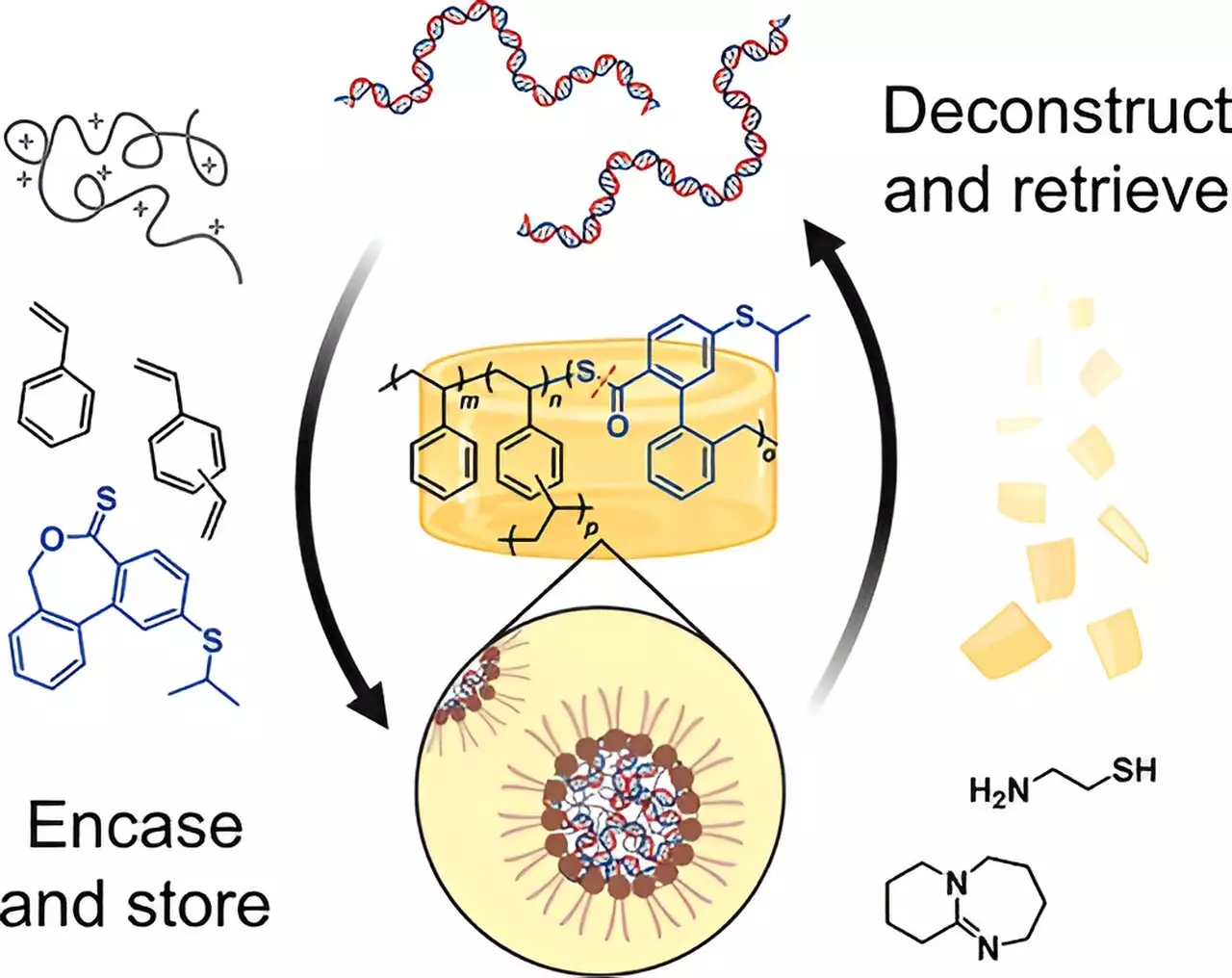In an era where digital information proliferates at an unprecedented rate, the challenge of reliable, scalable, and sustainable data storage becomes increasingly urgent. While traditional methods—such as magnetic tapes, hard drives, and cloud servers—serve us today, they are inherently constrained by energy consumption, material degradation, and physical limitations. The groundbreaking development of a durable, amber-like polymer for DNA preservation represents a paradigm shift that promises not only enhanced stability but also a sustainable approach to archiving humanity’s most valuable data.
The concept is rooted in one of science fiction’s most iconic scenes from “Jurassic Park,” where preserved dinosaur DNA in amber allowed scientists to resurrect extinct species. Now, modern researchers are harnessing a similar idea—not by reviving dinosaurs but by creating advanced materials that can protect genetic and digital information for centuries or even millennia. This amber-inspired polymer transcends the limitations of conventional storage, offering room-temperature stability, resistance to environmental stresses, and an elegant method to both encapsulate and retrieve sensitive data.
By synthesizing a specialized polymer that mimics the fossilized amber of ancient trees, scientists have paved the way for a future where DNA—arguably the most efficient data storage molecule—can be stored safely in any environment. This innovation could radically minimize energy costs, reduce reliance on cold storage, and democratize access to long-term data preservation worldwide.
Reimagining DNA as a Digital Depot
DNA has long been championed as a high-density data storage medium because of its unique properties. It can encode vast amounts of information in an incredibly compact form—by some estimates, a single gram of DNA could hold the entire digital data of the world. Furthermore, DNA’s natural stability ensures that, if properly preserved, it can last thousands of years. Yet, practical challenges—such as the fragility of biological molecules and current preservation techniques—have impeded widespread adoption.
Traditional preservation demands ultra-low temperatures, requiring significant energy and infrastructure. This approach is not only costly but also inaccessible in many parts of the world. The new polymer technology changes this dynamic by fundamentally altering how we think about long-term storage. Encasing DNA in a glassy, amber-like substance provides an ideal environment: it shields molecules from water, heat, and oxidative damage, extending their lifespan without energy-intensive cooling.
Importantly, this polymer-based system is biocompatible and reversible. The DNA can be carefully extracted for analysis or sequencing—without degradation—once the need arises. This flexibility ensures that archived genetic material or digital data can be accessed reliably in the future, regardless of technological progression.
From Biotech to the Digital Age: Broad Applications and Future Directions
The implications of this technology extend beyond academic curiosity; they herald a new era in data management, personalized medicine, and cultural preservation. Imagining a world where nations maintain centuries-long archives of vital documents, historical artifacts, or medical records stored safely within a small capsule is no longer science fiction.
Moreover, the ability to embed entire human genomes in a stable, room-temperature medium holds particular promise for personalized medicine. As genomic sequencing becomes integral to healthcare, securely storing individual genetic blueprints becomes a necessity—not just for immediate diagnosis but also for future research and ethical considerations.
Commercial ventures, like MIT’s Cache DNA, are already working to translate this concept into real-world products. By refining the polymer synthesis process and developing user-friendly capsules, these initiatives aim to make DNA-based storage scalable and accessible. As technology evolves, one can envision these capsules being stored in data centers, archived in museums, or even buried deep beneath the Earth’s surface for millennia.
Nevertheless, critical challenges remain. The process of embedding and retrieving DNA must become more efficient and cost-effective. Ensuring sequence integrity through multiple storage cycles—and scaling production to accommodate global demand—will require continued interdisciplinary collaboration. Despite these hurdles, the vision of a universal, energy-efficient, and ultra-durable storage medium rooted in ancient natural materials is compelling.
Why This Matters: A Matter of Perspective and Responsibility
From a critical standpoint, this innovation represents a significant leap, but it also invites reflection on ethical and environmental responsibilities. The capacity to store human genomes or global digital data indefinitely raises questions about privacy, data security, and consent—particularly as storage methods become more accessible and widespread. Moreover, sourcing raw materials for polymer synthesis, though seemingly low-impact compared to fossil fuels, still warrants mindful consideration to ensure sustainability.
Ultimately, this development challenges us to rethink what it means to preserve knowledge. If we can encode the essence of human civilization—our history, culture, and scientific achievements—in durable, stable mediums that outlast traditional infrastructure, then we take a vital step toward securing our collective future. With thoughtful stewardship, this amber-inspired storage technology might transform how we safeguard the legacy of humanity for generations to come.

